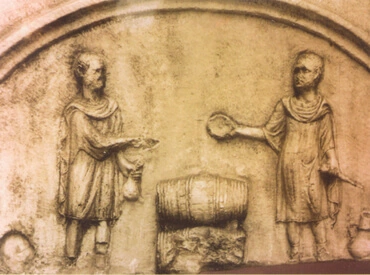7
Und dem Fürsten sollt ihr geben auf dieser und auf jener Seite des heiligen Hebopfers und des Eigentums der Stadt, längs des heiligen Hebopfers und längs des Eigentums der Stadt, an der Westseite westwärts und an der Ostseite ostwärts, und der Länge nach (d. h. eigentlich der Breite nach, da es die Schmalseite ist; aber hier und in Kap. 48 bedeutet der Ausdruck "Länge" stets die von Osten nach Westen sich erstreckende Seite. S. die Anm. zu Kap. 48,21) gleichlaufend einem der Stammteile, welche von der Westgrenze bis zur Ostgrenze liegen.







